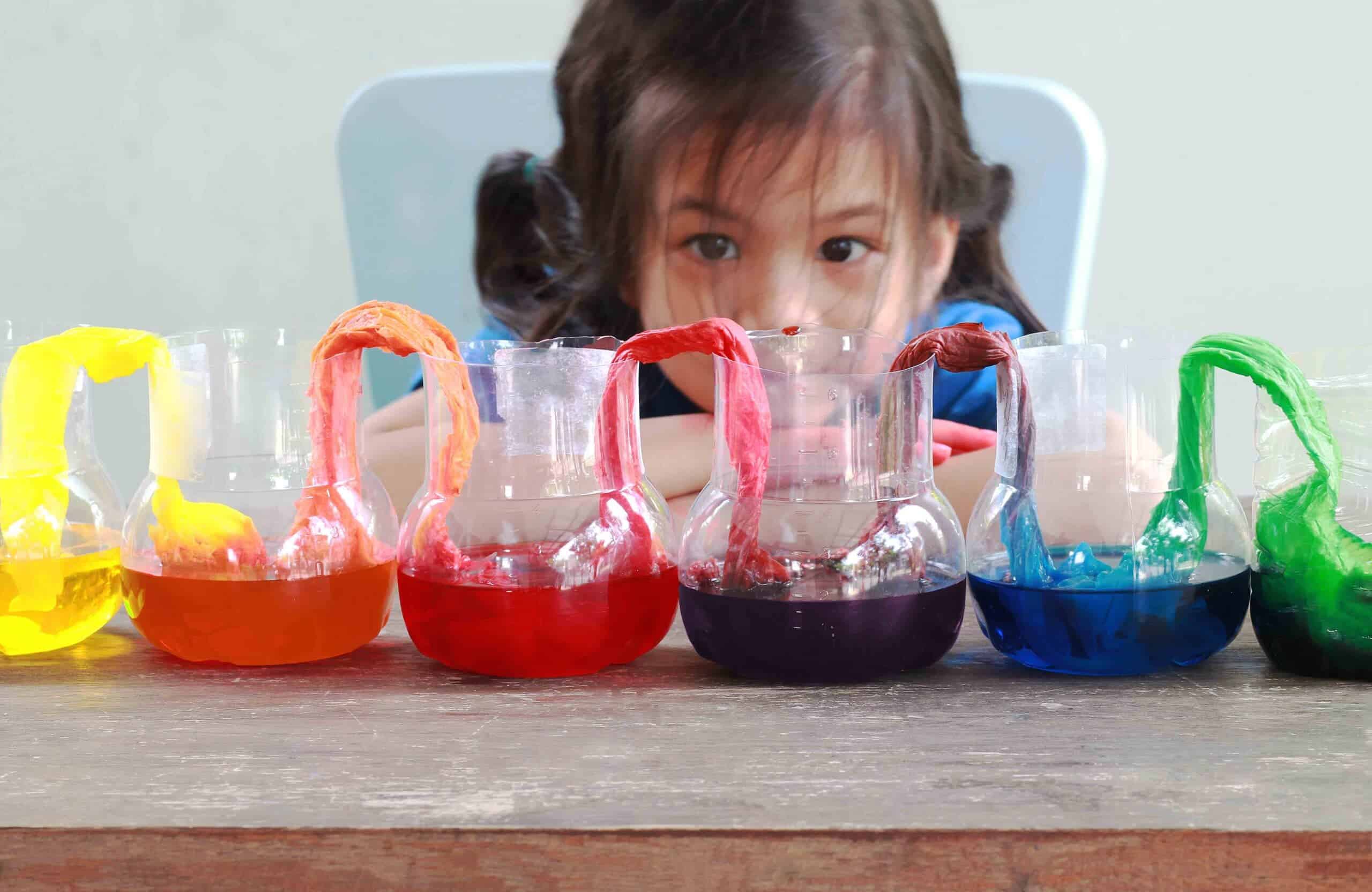Art plays an integral role in interdisciplinary education. When teachers make a conscious effort to weave art into the curriculum, they will quickly discover that there are numerous benefits of art education. Aspiring educators who are passionate about art and know that giving students the opportunity to express their creativity in the classroom is the key to developing the core competencies required for today’s modern world, should consider pursuing a Bachelor of Fine Arts in Art Education
Understanding STEAM Education
To equip students with the skills they would need for the 21st century, educators and administrators worked to prioritize science, technology, engineering and mathematics into the curriculum. It was a movement known as STEM, but it quickly transformed into STEAM, adding in the ‘A’ for arts. Weaving art into the STEAM curriculum allows teachers to prioritize creativity and innovation and to showcase the role that art plays in today’s complex, global economy.
H3: What Is STEAM Education?
Defined by the Institute for Arts Integration and STEAM, STEAM is an educational approach that emphasizes science, technology, engineering, art and math. STEAM education naturally prioritizes critical thinking, communication and collaboration. The goal of STEAM education is to provide students with a strategic, skills-based curriculum that will prepare them for the jobs and career paths of the future.
The Role of Art in STEAM
Originally left out from this collaborative and innovative approach, art now plays an integral role in any STEAM education curriculum. Integrating art into STEM education enhances the curriculum, giving students unlimited creative freedom to develop solutions and generate unique ideas.
The Importance of Art in Schools
Art is a collective term that refers to a variety of creative subjects in schools, such as fine arts, language arts, physical arts, manual arts and liberal arts. Incorporating art into the school curriculum helps students of all ages, interests and abilities to enjoy a well-rounded education. When art is introduced in the classroom, not only does it provide young learners with a new appreciation for culture and beauty, but it also highlights the importance of creativity in our daily lives.
Educational Benefits of Art
Rather than treating art as a secondary subject that exists outside the traditional academic curriculum, educators are finding that utilizing innovative teaching methods to incorporate art into every aspect of learning offers endless academic benefits. Some of the top educational benefits of art include:
- Improving writing skills.
- Improving critical thinking skills.
- Improving fine motor skills.
- Improving mathematical skills.
Art as Emotional Expression
In addition to offering academic support and development, art can be used to enhance the social and emotional learning experiences of students in the classroom environment. Art is a wonderful way for students to express themselves emotionally, especially for young learners who are just beginning to understand and identify their emotions. By giving students the power to use art as an outlet for their feelings, educators can help them learn to better manage and regulate their emotions. Emotional intelligence in education is a trending topic across all grade levels, and art has been found to be an ideal way to improve emotional intelligence in students of all ages.
Developing Creative Thinking Skills
Art and critical thinking are commonly associated with one another, but many art educators are focusing more on developing creative thinking skills in students. Creative thinking skills are defined as those that help an individual come up with new and innovative ideas. Employers across all industries and sectors value creativity, making creative thinking skills some of the most important skills to develop in students.
Art and Creativity in the Classroom
When a STEAM approach is implemented, art and creativity are a part of daily life in the classroom. A number of educators are finding that project-based learning is an excellent way to bring art to life in the classroom environment. Project-based learning is a teaching method in which students work collaboratively on an extended project that focuses on a specific question or problem. Most project-based learning projects require students to research and investigate the problem at hand, and then work together to develop a real-world solution. Throughout the process, art and creativity take center stage as students develop new and innovative ideas for the problems that exist today.
Encouraging Innovative Problem-Solving
Even when art and critical thinking are expertly woven into the curriculum, teachers need to encourage creative and innovative problem-solving in their students. Educators can do this by:
- Fostering a growth mindset in all students, allowing them to know that mistakes happen and that these mistakes are the reason that people grow and learn.
- Promoting teamwork among all classmates, allowing them to feel more comfortable collaborating with one another.
- Encouraging students to reflect on the work that they did, and to recognize the growth that occurred throughout the experience.
- Prioritizing hands-on learning in the classroom and giving students a chance to experience the concepts being talked about in their lessons.
Benefits of Art Education
Art and academic performance are closely linked together, but the benefits of an art education often extend beyond improved math skills or enhanced scientific reasoning. Educators and parents alike find that when their students are exposed to the arts, they benefit in nearly every aspect of their lives.
Cognitive and Developmental Benefits
STEAM projects and other art-based learning opportunities can help foster cognitive and developmental growth. The cognitive benefits of art include:
- Improving overall focus, allowing students to feel more aware and present throughout their entire school day.
- Improving memory, giving students an opportunity to better retain the information being presented to them.
- Improving problem-solving skills, allowing students to think creatively and come up with new and exciting solutions.
- Improving resilience, helping students to continue to persevere in the face of adversity.
Long-Term Advantages for Students
While art educators will begin to see an immediate difference in students who are enjoying a STEAM curriculum, it’s important to recognize that the benefits of an art education last for a lifetime. Students exposed to art throughout their education, and who enjoy a STEAM curriculum, grow into adults who value creativity, have an appreciation for the arts and can effectively problem-solve.
Implementing Art in STEAM Programs
Educators already familiar with STEM programming or are working to transform a STEM curriculum into a STEAM curriculum, will want to know how to effectively implement art into the classroom environment. Implementing art into STEAM programs is actually easier than most realize, and many educators find that they enjoy the creativity that comes along with weaving art into an interdisciplinary education.
Best Practices for Educators
The best practices for educators who want to implement art into STEAM education are:
- Developing student-lead STEAM projects and prioritizing project-based learning.
- Allowing students the freedom to complete hands-on activities that allow them to think creatively and bring their own ideas to life.
- Using curriculum standards as a framework for incorporating art into a lesson.
- Partnering with the local community to increase art exposure within the school environment.
Resources and Tools for Effective STEAM Education
Teachers who want to effectively implement a STEAM curriculum should rely on a variety of tools and resources to help them develop creative lesson plans and engaging, student-led STEAM projects. Some of the top tools and resources for STEAM educators include:
- Curriculum standards and frameworks.
- Other educators who are already well-versed in STEAM learning.
- Local museums and art organizations.
- Online apps and resources that offer insight into STEAM education.
Real-World Applications of STEAM
The skills and knowledge acquired throughout a STEAM education can be applied in many real-world scenarios. Today’s employers are looking for up-and-coming professionals who can do more than just retain and reiterate knowledge, facts and figures. They want professionals who can think critically about a problem, collaborate with others and come up with an innovative solution. Understanding the practical applications of STEAM learning can help any educator prioritize art in the classroom environment.
Art in Technology and Engineering
On the surface, the creative world of art may seem starkly different from the defined and strategic worlds of technology and engineering. However, art is more closely related to these fields than you might think. Engineers and tech professionals are more likely to be successful if they have a background in art. Art can help engineers and those involved in technology development better visualize the products they are creating, and in turn, they can develop a more strategic and effective plan. In addition, an art background can make an engineer or developer more precise and detail-oriented, which not only streamlines the production process but also improves the result.
Successful STEAM Initiatives
Successful STEAM initiatives have a lot in common with one another. First and foremost, these initiatives are designed with creativity in mind, giving students more control over the learning process as well as the result. A successful STEAM initiative is one that:
- Offers an interdisciplinary education.
- Emphasizes hands-on learning and skill development.
- Encourages project-based learning through STEAM projects.
- Fosters creative thinking.
- Encourages collaboration among students.
Knowing the key components of successful STEAM initiatives allows you, as an art educator, to begin thinking creatively and developing your own STEAM learning opportunities.
Learn How to Develop a STEAM Curriculum at Rocky Mountain College of Art + Design
By recognizing the importance of art in schools, Rocky Mountain College of Art + Design has developed an innovative Bachelor of Fine Arts in Art Education degree. With both an in-person degree program and an online degree program available, students can select a program that is best for them and prepare to become an art educator for K-12 students. Request more information about our art and design degree programs today.

